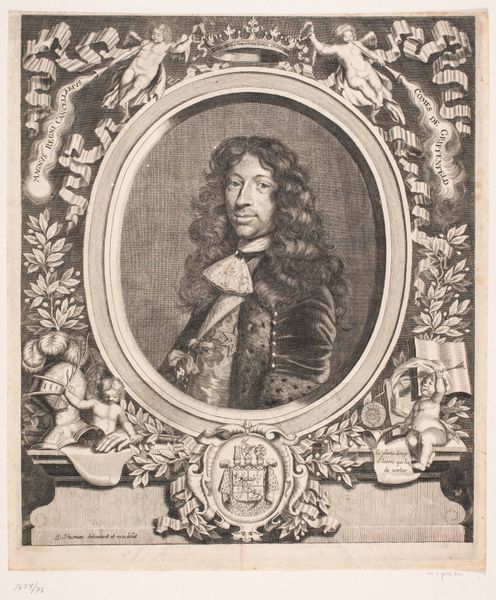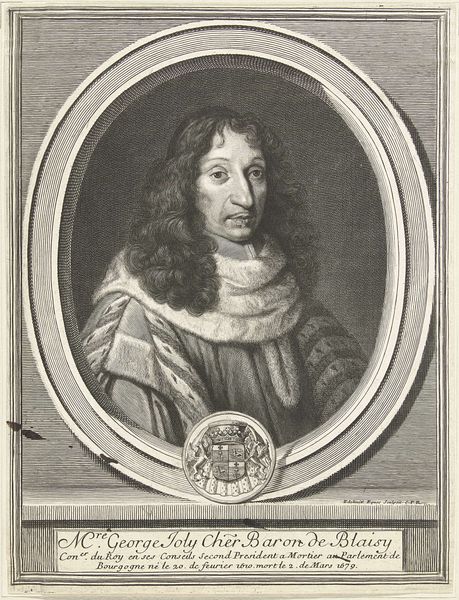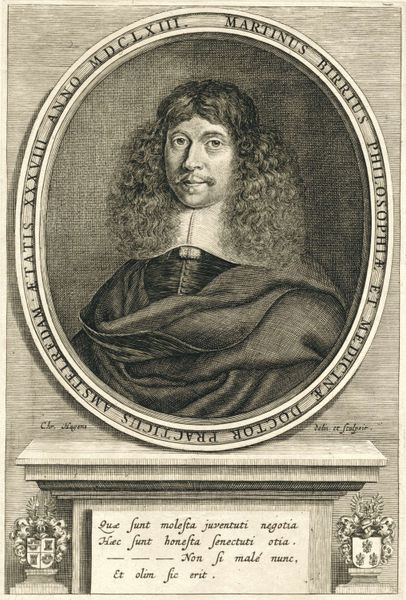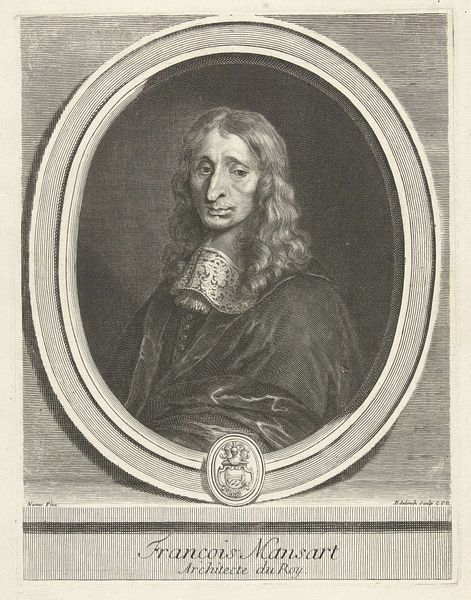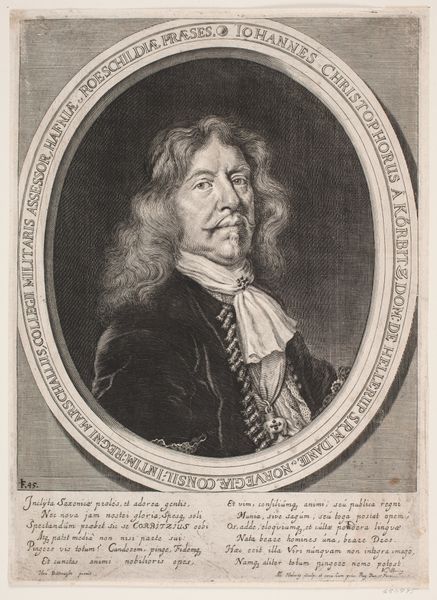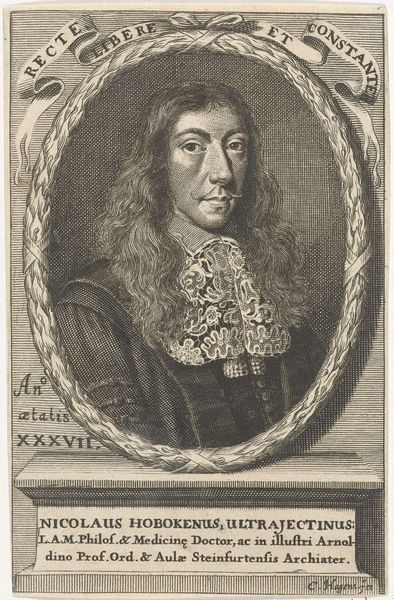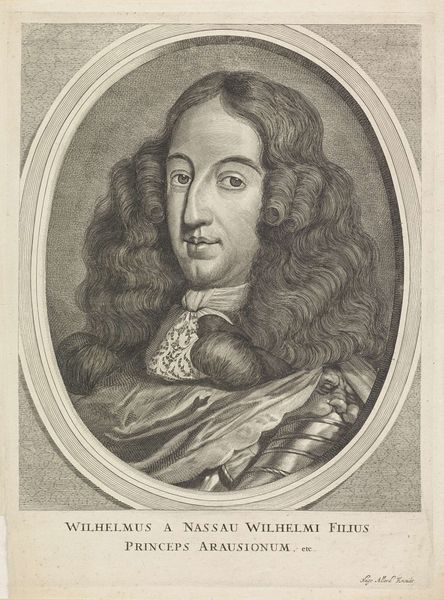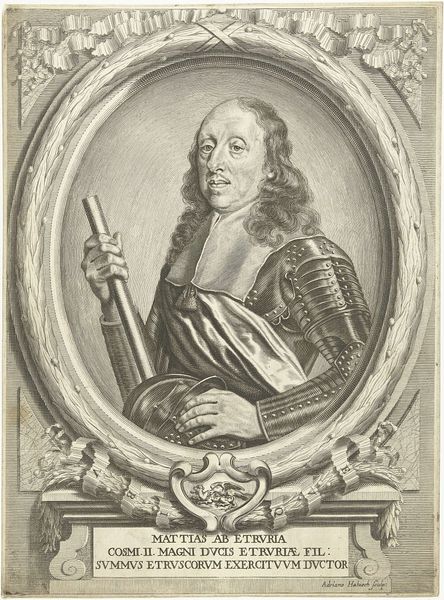
metal, engraving
#
portrait
#
baroque
#
metal
#
line
#
history-painting
#
engraving
Dimensions: height 265 mm, width 181 mm
Copyright: Rijks Museum: Open Domain
This portrait of Peder Schumacher, Count of Griffenfeld, was made by Coenraet Waumans. The print was achieved through the intaglio process. The image was incised into a metal plate, likely copper, using tools like burins and etching needles. Consider the labor involved. First, the engraver had to render the likeness of the Count, capturing the details of his face, hair, and clothing. The metal plate was then inked, and the surface wiped clean, leaving ink only in the incised lines. Finally, the plate was pressed onto paper, transferring the image. This wasn’t just about technical skill, but also about social status. The portrait immortalizes a powerful figure, reinforcing his position in society. The print itself would have circulated among the elite, reinforcing their shared identity. This portrait connects us to the skilled labor of the printmaker, the power of the sitter, and the social world of 17th-century Europe, challenging any easy distinction between art and craft.
Comments
No comments
Be the first to comment and join the conversation on the ultimate creative platform.
